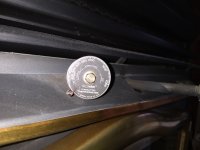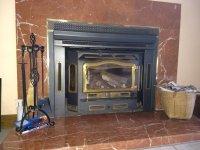Our stove is in the basement, too. It's the only place it would fit. It's near an outside stairwell with the bulkhead doors outside, so I just stack the wood in those stairs in winter. Nice in that it holds about 3 weeks of continuous burn wood, plus 5 days in the house.
To get heat upstairs to our living room on the other side of the house, I ran a duct from above the stove to a floor register at one end of the living room. In that duct I installed a high-temperature booster fan. That is connected to a thermostat mounted in the ceiling of the room with the wood burner in it. When the temperature of the wood burner room gets up to 78, it kicks on the booster fan, sending hot air from directly above the stove up to the living room. When the woodburner room temperature drops to 76, the thermostat cuts out and the blower goes off. Works great.
I'll probably have to do something like this Moss. Do you happen to know the cfm output of your fan? Also, how long a run is your ducting?


